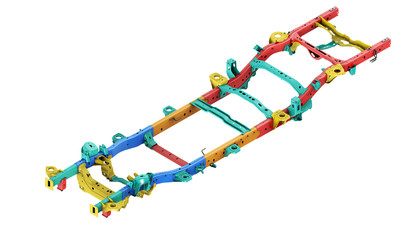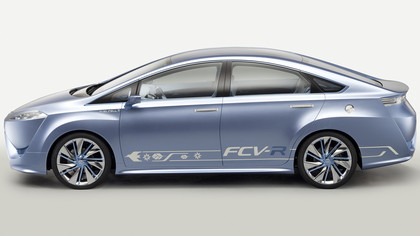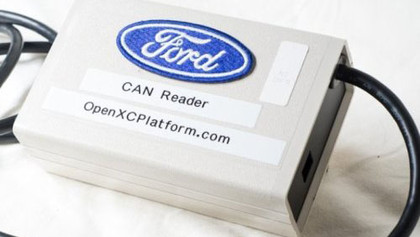The car of the future: the tech that's coming next
What will they invent next?

"As the industry moves more to aluminium there are newer materials with better formability and stiffness," he says. "New alloys will maximise strength and lower weight. We have a Jeep concept with meshed-steel that cuts the weight in half but still has the same structural rigidity.
"There are more and more electronics, but 50% of it is all communication wires with one electric module communicating with a bus. We currently use copper, but most of that could be replaced with fibre optics - the only thing stopping us is cost."
Cairns says the future truck could reduce the 680kg (1,499lbs) of copper used for electrical connections. One possible innovation is using wireless transmissions to send signals to different parts of the vehicle. The computer modelling required will even go beyond just the parts and design of the future vehicle.
Today, Chrysler already uses computer modelling to aid in truck assembly - for example, knowing which parts will be used and where they are located. In the future, computer models could go even further - knowing how much all parts weigh, who is installing them, how far they have to be moved and how they all fit together.
Toyota: Hydrogen-powered cars
There's a raging debate over the future of the electric car. Some view a battery-powered engine as the safest and most efficient option. Others wonder about the cost to make the power, whether the technology is safe and how much it costs to transport.
Jim Pisz, the corporate manager for North American business strategy at Toyota, told TechRadar that the future car will be powered by hydrogen fuel cells instead.
"By the end of 2020, hydrogen gas-powered fuel cells will challenge traditional battery electric technology," says Pisz. "Many car makers have been developing this technology for the past decade or so. Our fuel cell cars are safe, robust, give a range of over 300 miles and refuel in about five minutes. And, they're becoming affordable."
Get daily insight, inspiration and deals in your inbox
Sign up for breaking news, reviews, opinion, top tech deals, and more.

The great unknown, of course, is how the infrastructure will develop. Today, there are petrol fuelling stations across the globe. And EV chargers are slowly popping up in major cities.
"The challenge for both battery and fuel cell electric cars is infrastructure," he says. "It's very easy to see how some infrastructure for battery electric cars is affordable on a limited basis. However, as ownership increases, the amount of money necessary for market sustaining infrastructure is monumental.
"With fuel cell electric vehicles, it's just the other way around. The initial infrastructure is prohibitively expensive, but future additions are quite inexpensive."
Ford: Customising the car dashboard
What if the future car could respond to your style and interests, adjusting the dash interface and even changing material composition to suit your needs?
TJ Giuli, the research lab leader at Ford Motor Company, told us that the future car might include hardware modules that a driver could add or adjust to suit their preferences, and the car would then adapt to make those modules work. In fact, the OpenXC hardware API is already paving the way for just such a trend in the future.
"I'd like to see the actual physical interface becoming much more malleable and reconfigurable," he says. "OpenXC could enable the car to have pluggable modules or ways of fundamentally redesigning the car in such a way that you expect the parts to be interchangeable."
One example of this is that if a future car uses a form of multi-touch gestures, and then the industry advances with a new form of touch control, a driver could add that new module. Or, if a driver doesn't like the way the steering wheel buttons are arranged, a new module could be used.

Ford is also working on the data architecture to make this possible, which involves routing the power and working out which data cables might be required. The idea is to make future cars more customisable so that drivers can retain a consistent UI look.
"It speaks to a need to carry over experiences they enjoy from other parts of their life," says Giuli. "If you like the iPhone or Mac, you might like to have a similar experience when you get into the car. If we are talking about cars that are human-controlled, we will still design systems that are not distracting - there will be an automotive flavour to a system like that. But there could be a wholesale consumer OS replacement that runs in some part of the car."
Another way the car could adapt is by changing the interface in the dash to suit the current driving conditions. For example, on a lonely stretch of road, the interface could dim for safer driving with fewer distractions. "In 20 or 30 years, there could be adaptable materials," says Giuli. "In theory, you could make a system that is very easy to remove or physically modify but visually would look coherent."
Could that involve nanobots that work behind the scenes to adjust the hardware materials? Giuli said anything is possible. "It could be really cool," he says.
John Brandon has covered gadgets and cars for the past 12 years having published over 12,000 articles and tested nearly 8,000 products. He's nothing if not prolific. Before starting his writing career, he led an Information Design practice at a large consumer electronics retailer in the US. His hobbies include deep sea exploration, complaining about the weather, and engineering a vast multiverse conspiracy.
